-
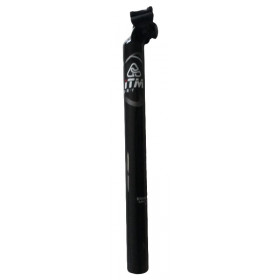 New product -60%ITM speedry carbon road bike seatpost 31.6 mm 350 mm
New product -60%ITM speedry carbon road bike seatpost 31.6 mm 350 mm- €52.00
- €129.99
-
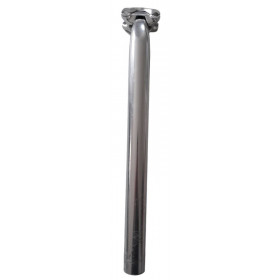 New product Used -40%Seatpost 300 mm
New product Used -40%Seatpost 300 mm- €8.99
- €14.99
-
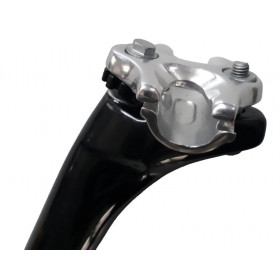 New productCarbon road bike seatpost 31.6 mm 350 mm
New productCarbon road bike seatpost 31.6 mm 350 mm- €39.99
-
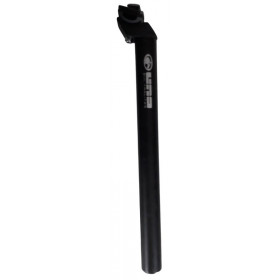 New productSeatpost 30.2 mm 320 mm offset 25 mm UNO
New productSeatpost 30.2 mm 320 mm offset 25 mm UNO- €24.99
-
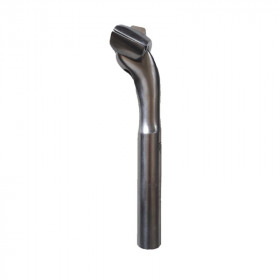 New productBLB aero seatpost 27.2 mm 200 mm
New productBLB aero seatpost 27.2 mm 200 mm- €15.99
-
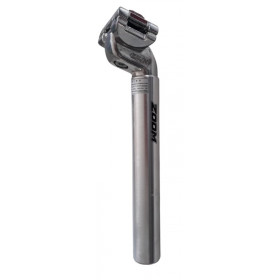 New productSeatpost 27 2 mm
New productSeatpost 27 2 mm- €12.99
-
 UsedSelle Italia SLR monolink with seatpost
UsedSelle Italia SLR monolink with seatpost- €79.99
-
 Dedacciai Zero 100 seatpost
Dedacciai Zero 100 seatpost- €47.99
-
 New product -50%Crankbrothers Cobalt 3 seatpost 30.9 mm 400 mm
New product -50%Crankbrothers Cobalt 3 seatpost 30.9 mm 400 mm- €50.00
- €99.99
-
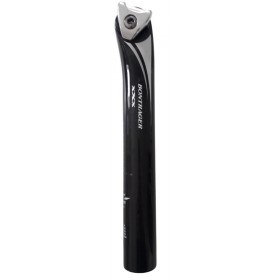 New product -50.1%Carbon seatpost Bontrager XXX 10 mm offset
New product -50.1%Carbon seatpost Bontrager XXX 10 mm offset- €99.80
- €199.99
-
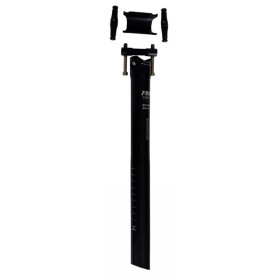 New productFRM ST-M10 Ti seatpost 30.9 mm 350 mm
New productFRM ST-M10 Ti seatpost 30.9 mm 350 mm- €89.99
-
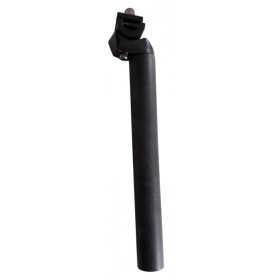 UsedPromax seatpost 30.9 mm 245 mm offset 25 mm
UsedPromax seatpost 30.9 mm 245 mm offset 25 mm- €8.99
-
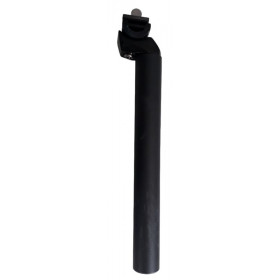 New productSeatpost 30.8 mm 240 mm offset 25 mm
New productSeatpost 30.8 mm 240 mm offset 25 mm- €14.99
-
 UsedRitchey WCS seatpost 27.2 mm 250 mm used
UsedRitchey WCS seatpost 27.2 mm 250 mm used- €4.99
-
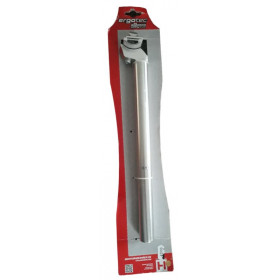 New product -34%Ergotec 2 seatpost 26.6 mm 350 mm offset 20 mm
New product -34%Ergotec 2 seatpost 26.6 mm 350 mm offset 20 mm- €19.79
- €29.99
-
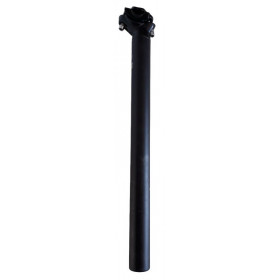 New product -40%Seatpost 31.6 mm 400 mm offset 10 mm Lite
New product -40%Seatpost 31.6 mm 400 mm offset 10 mm Lite- €13.19
- €21.99
-
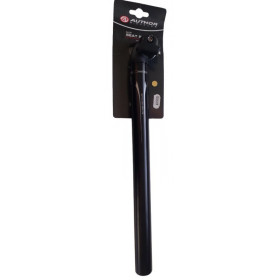 New product -35%Seatpost 30.9 mm 400 mm offset 20 mm
New product -35%Seatpost 30.9 mm 400 mm offset 20 mm- €29.24
- €44.99
-
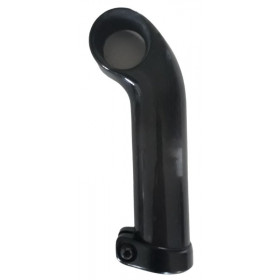 New productSeatpost Trek madone emonda domane carbon 135 mm without fixture
New productSeatpost Trek madone emonda domane carbon 135 mm without fixture- €89.99
-
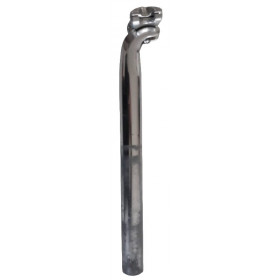 UsedRitchey seatpost 31.8 mm 310 mm used
UsedRitchey seatpost 31.8 mm 310 mm used- €3.99
-
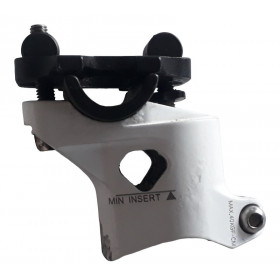 UsedSeatpost 18 mm offset used
UsedSeatpost 18 mm offset used- €14.99
-
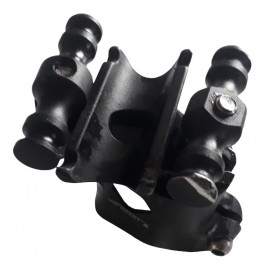 UsedSeatpost used
UsedSeatpost used- €19.99
-
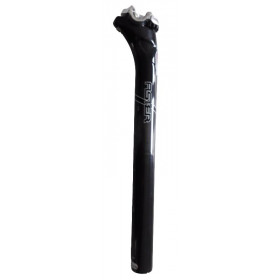 New productRoad bike seatpost carbon Aster 31.6 mm 350 mm black
New productRoad bike seatpost carbon Aster 31.6 mm 350 mm black- €39.99
-
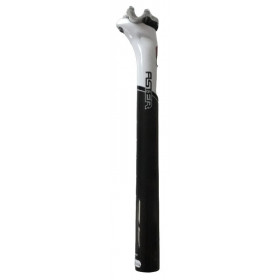 New productCarbon road bike seatpost Aster 31.6 mm 350 mm
New productCarbon road bike seatpost Aster 31.6 mm 350 mm- €39.99
-
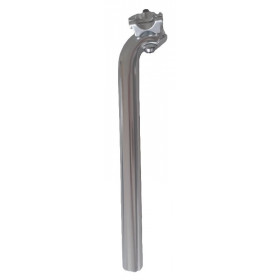 New productSeatpost 30 mm 340 mm
New productSeatpost 30 mm 340 mm- €19.99
-
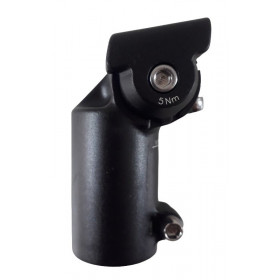 New productSeatpost 34.8 mm
New productSeatpost 34.8 mm- €29.99
-
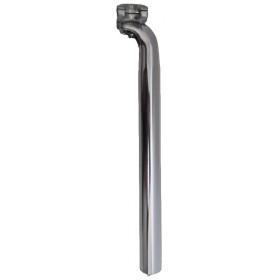 New productRitchey seatpost 31.8 mm 310 mm
New productRitchey seatpost 31.8 mm 310 mm- €8.99
-
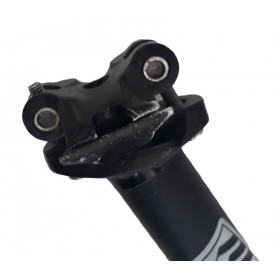 UsedMTB and road seatpost 30.9 mm
UsedMTB and road seatpost 30.9 mm- €9.99
-
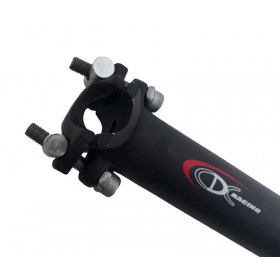 UsedMTB and road seatpost CDC racing 31.6 mm
UsedMTB and road seatpost CDC racing 31.6 mm- €12.99
-
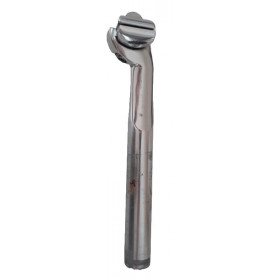 UsedRoad bike seatpost Kalloy 26.6 / 230 mm
UsedRoad bike seatpost Kalloy 26.6 / 230 mm- €9.90
-
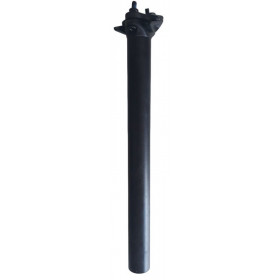 UsedSeatpost 31.6 mm 350 mm
UsedSeatpost 31.6 mm 350 mm- €5.99
-
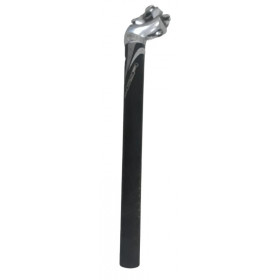 Used4ZA carbon seatpost 29.4 mm 350 mm
Used4ZA carbon seatpost 29.4 mm 350 mm- €17.99
-
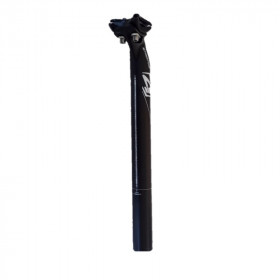 New product4ZA Stratos seatpost 31.6 mm 350 mm
New product4ZA Stratos seatpost 31.6 mm 350 mm- €25.99
-
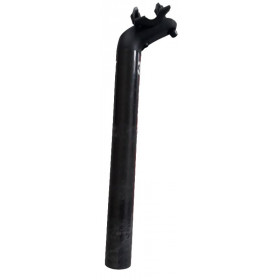 UsedCarbon seatpost 3T Dorico 31.6 mm
UsedCarbon seatpost 3T Dorico 31.6 mm- €24.99
-
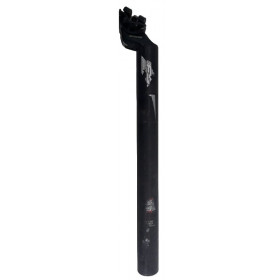 UsedFSA carbon pro 31.6 / 320 mm seatpost
UsedFSA carbon pro 31.6 / 320 mm seatpost- €8.99
-
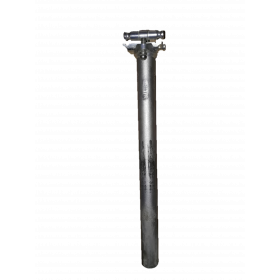 UsedSunn Lite 27.2 , 325 mm seatpost
UsedSunn Lite 27.2 , 325 mm seatpost- €7.99
-
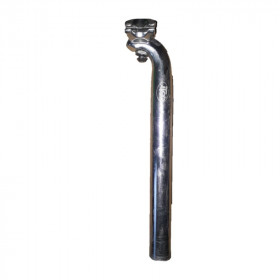 UsedAtoo seatpost 31.8 / 320 mm used
UsedAtoo seatpost 31.8 / 320 mm used- €14.99
-
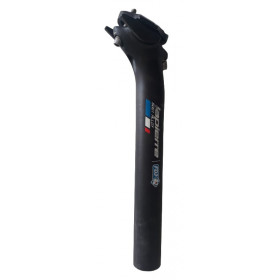 UsedLapierre seatpost 31.45 190 mm
UsedLapierre seatpost 31.45 190 mm- €8.99
-
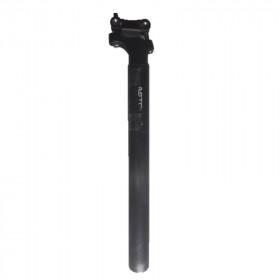 UsedEaston 31.6 mm / 300 mm alu seatpost
UsedEaston 31.6 mm / 300 mm alu seatpost- €8.90
-
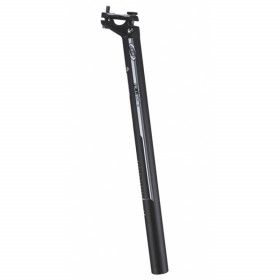 New productBBB 31.6 mm / 400 mm alu seatpost
New productBBB 31.6 mm / 400 mm alu seatpost- €28.50
-
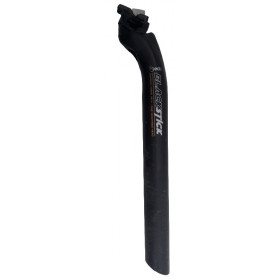 More detailsUsed Out-of-StockDedacciai black stick carbon seatpost 32.4 mm
More detailsUsed Out-of-StockDedacciai black stick carbon seatpost 32.4 mm- €34.99
Showing 1-40 of 40 item(s)
A road bike seatpost is a device that holds the saddle in place relative to the bike frame.
Characteristics of a road bike seatpost:
A road bike seatpost generally consists of a tube to which a seat clamp is attached. The seat tube is used to vary the height of the road bike saddle relative to the road bike bottom bracket. It also allows the saddle's orientation relative to the road bike stem. The seat clamp is used to adjust the distance between the saddle and the road bike handlebars; this adjustment is also called seat setback; the seat clamp is also used to orient the saddle relative to the horizontal.
Some road bike frame manufacturers have chosen to develop their own road bike seatposts, which are not round in shape but specific to the shape of the frame's vertical tube. This is the case for certain models from Look Cycle, Time, BMC, etc.
How to choose your road bike seatpost ?
Here are some criteria to help you identify the road bike seatpost that best meets your needs.
For road bike frame models designed for a non-round tube shape, you will have no choice but to use the road bike seatpost that corresponds to the make and model of your road bike.
On the other hand, if your road bike frame is designed for a round road bike seatpost, then your selection will be wider. In this case, you will need to determine:
- the diameter of the road bike seatpost (to the nearest tenth of a millimeter)
- the length of the road bike seatpost
- the setback of the saddle allowed by the seat clamp and provided by its attachment to the tube
- the material of the road bike seatpost
- the weight
It is also possible to use a dropper post for road bikes, which allows you to adjust the height of the saddle to lower the center of gravity and improve the bike's handling when descending.
A road bike suspension seatpost will feature a shock and vibration absorption element designed to improve comfort. This system slightly varies the height of the saddle when used. Since a road bike suspension seatpost incorporates a shock-absorbing system, the adjustable portion of the tube will be reduced, so it is essential to allow for the length of the shock absorber when adjusting the saddle height.
A road bike seatpost can be made of aluminum or carbon, which is lighter and stiffer than aluminum; unfortunately, carbon is not recyclable.
A carbon road bike seatpost will be light and stiff; the tube will not necessarily be round, as this material allows for a variety of shapes.
When assembling your road bike seatpost, we recommend applying grease between the tube and the road bike frame to prevent it from seizing after a few months.
Road bike seatpost adjustment :
To customize the saddle position according to the cyclist's body shape, the road bike seatpost allows for numerous adjustments:
The height of the road bike seatpost to achieve a slight flexion of the knee while pedaling.
The angle of the road bike seatpost with the frame.
The best road bike seatpost will be the one that allows you to achieve the ideal setting for your body shape, while still being compatible with your bike.
A vintage road bike seatpost will be defined according to older standards; for example, a seatpost with a tube diameter of 26.4 mm will generally be used on a racing bike with a steel frame.
What are the road bike seatpost brands ?
Some brands specialize in the design and manufacture of road bike seatposts, such as FSA, Thomson, Dedacciai, BBB, 4ZA, and Velo Orange, which offer high-quality road bike seatposts in carbon or aluminum, in all sizes.
Bicycle manufacturers also offer their own models, such as the Decathlon road bike seatpost.
Road bike seatpost inspection criteria:
All components and parts offered in used condition in our store are meticulously inspected according to strict control points.
Here are the elements we inspect on the used road bike seatposts available on our website:
Visual inspection of each component of the road bike seatpost (detection of dents, scratches, etc.)
Verification of all screwed elements (threads and threads)
Measurement of the tube diameter
Based on our observations and experience, the condition of each road bike seatpost is rated from 0 (for parts) to 10 (new in its packaging).
Components to complement a road bike seatpost :
In our store, you'll find numerous parts and accessories to help you assemble your road bike seatpost, such as road bike saddles, seat clamps, and road bike seatpost bags, all from leading brands, all available in stock. These components are in new condition and come from clearance items and are offered at the best prices !
Mastering the art of adjusting the saddle position on your road bike :
Are you passionate about cycling and always looking to improve your road cycling experience? Saddle position is one of the key aspects that can have a significant impact on your performance and comfort on the road. Mastering the art of adjusting the saddle position on your road bike is essential for achieving optimal power transfer, preventing injuries, and enjoying long rides without discomfort. In this guide, we'll delve into the importance of saddle positioning and explore the different factors to consider when making adjustments. From finding the right height and angle to understanding the importance of fore-aft positioning, we'll provide expert tips and techniques to ensure your saddle is perfectly suited to your body and riding style. Whether you're a seasoned cyclist or just starting out, join us on this journey to unlock the secrets of saddle adjustment and take your road cycling experience to new heights.
The importance of saddle position in road cycling :
When it comes to performance and comfort on a road bike, saddle position is crucial. Poor saddle position can lead to problems such as lower back, knee, or neck pain. However, a correct saddle position allows for optimal power transfer, reduces the risk of injury, and improves your pedaling efficiency.
One of the main benefits of a good saddle position is the reduction of pressure on the contact points between your body and the bike. When the saddle is properly adjusted, your weight is evenly distributed across your buttocks, hands, and feet, reducing the risk of numbness, pain, and discomfort during your rides.
It's also important to note that saddle position directly affects your ability to transfer power from your legs to the pedals. Poor position can lead to a loss of power and a decrease in the efficiency of your pedal stroke. By properly adjusting your saddle position, you can optimize your pedaling and increase your speed and endurance on the road.
Factors to consider when adjusting your saddle position :
When adjusting your saddle position, it's important to consider several key factors. The first and most fundamental is saddle height. Saddle height has a significant impact on your comfort and pedaling efficiency. A saddle that's too low can lead to a lack of power and knee pain, while one that's too high can cause strain on your hips and lower back.
There are several methods to find the right saddle height. One of the most common is the heel-stand method. Sit on your bike with your back against a wall or with someone else's help. Place your heels on the pedals and push down on the cranks. Your legs should be fully extended without your hips swinging. If your heels leave the pedals, the saddle is probably too high. If your knees are too bent, the saddle is probably too low. Repeat this procedure several times to ensure you find the ideal height for you.
The second factor to consider when adjusting saddle position is tilt. The tilt of the saddle can impact your comfort and performance. Leaning too far forward can put excessive pressure on sensitive parts of your body, while leaning too far back can lead to a lack of stability and control.
The best way to find the right tilt is to start with a neutral position and gradually adjust it according to your preferences. A neutral tilt means the saddle is parallel to the ground. From this position, you can adjust the tilt forward or backward depending on your comfort and how you feel during your rides.
Move the saddle back for optimal bike fit :
In addition to height and tilt, the fore-aft positioning of the saddle, also known as "setback," is another important aspect of saddle fit on your road bike. Setback refers to the distance between the center of the pedals and the center of the saddle. Proper saddle positioning optimizes your position on the bike, improves comfort, and optimizes power transfer.
Finding the right setback requires experimenting with different positions and considering your body type, flexibility, and riding style. Generally, a higher setback suits riders who prefer a more upright position on the bike, while a lower setback suits riders who prefer a more aerodynamic and aggressive position.
It's important to note that adjusting the setback can also impact the saddle's tilt angle. When you move the saddle back, the tilt angle can also change. It is therefore essential to take these two aspects into account when adjusting your saddle position.
Adjust your saddle position for optimal power transfer :
One of the main goals of adjusting your saddle position is to optimize the transfer of power from your legs to the pedals. Poor saddle position can lead to a loss of power and a reduced pedal stroke efficiency. Fortunately, there are techniques and tips to improve power transfer and maximize your performance on the road.
One of the first things to consider is the alignment of your knees in relation to your feet. When pedaling, your knees should move in a linear fashion, without splaying inward or outward. If your knees splay out, this could indicate poor saddle position. You can adjust the saddle angle to correct this alignment and improve power transfer.
Another aspect to consider is your hip flexion. For optimal power transfer, your hips should have a slight flexion when you sit on the saddle. Excessive flexion can lead to a loss of power, while insufficient flexion can put excessive strain on your leg muscles. By adjusting your saddle height, you can find the optimal flexion for your hips and improve your pedal stroke.
Common mistakes to avoid when adjusting saddle position :
When adjusting your saddle position, it's important to avoid certain common mistakes that could compromise your comfort and performance on the bike. The first mistake is significantly changing the saddle position before trying it out on the road. It's best to make gradual adjustments and test each position during your rides to assess its impact on your comfort and performance.
Another common mistake is overlooking the importance of small adjustments. Sometimes, just half a centimeter can make all the difference in terms of comfort and power transfer. Be patient and take the time to experiment with different positions to find the one that works best for you.
Finally, don't overlook the importance of a quality saddle. An ill-fitting or poor-quality saddle can compromise your comfort and stability on the bike. Invest in a saddle that's tailored to your body shape and riding style to enhance your road cycling experience.
Tools and techniques for adjusting saddle position :
When it comes to adjusting the saddle position on your road bike, there are several tools and techniques that can help you achieve accurate and reliable results. One of the most commonly used tools is a spirit level. A spirit level can help you check the horizontality of your saddle and adjust the tilt precisely.
Another useful tool is a tape measure or ruler. These tools allow you to accurately measure saddle height, setback, and tilt. It's important to take precise measurements to achieve the best results when adjusting your saddle position.
In addition to tools, there are also techniques that can help you fine-tune your saddle position. One of these techniques is fine-tuning the tilt. After roughly adjusting the tilt, you can hop on your bike and ride for a few minutes. Next, stop and check if you feel any pressure points or discomfort. If so, adjust the incline slightly and repeat the process until you find the ideal position.
Consult a professional for saddle adjustment :
If you are new to saddle adjustment or if you experience persistent problems despite making adjustments, it may be helpful to consult a professional. A professional saddle adjustment can help you achieve optimal results based on your body type, preferences, and riding style.
A professional saddle adjustment typically includes a thorough analysis of your body type, an assessment of your flexibility and mobility, and a study of your riding style. Based on this information, the professional can recommend the most appropriate adjustments to improve your comfort, performance, and enjoyment of your ride.
Conclusion and final tips for mastering saddle position adjustments :
Adjusting your saddle position is essential for any cyclist looking to improve their road cycling experience. By finding the right height, tilt, and setback, you can optimize your comfort, performance, and power transfer. However, it's important to consider your body type, flexibility, and riding style when making these adjustments.
Remember to make gradual adjustments and test each position on the road to assess its impact on your comfort and performance. Use the appropriate tools and techniques to achieve accurate and reliable results. And if you experience difficulties or want to achieve optimal results, don't hesitate to seek professional advice to adjust your saddle position.
By mastering the art of adjusting your saddle position on your road bike, you'll be able to enjoy more comfortable rides, improve your performance, and take your road cycling experience to new heights. So, put these tips into practice and discover the benefits of a saddle position that's perfectly suited to your body and riding style. Happy riding!
